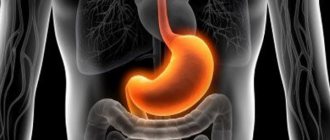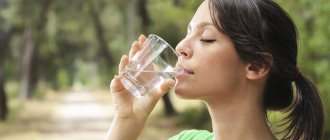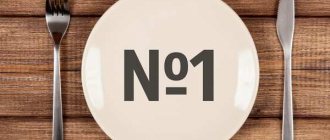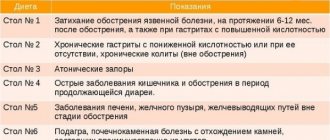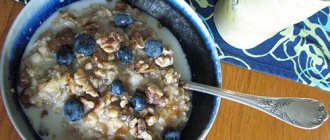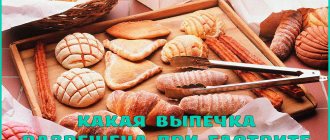General rules
Antral gastritis (or gastritis type B, bacterially caused) is a chronic inflammatory disease of the mucous membrane of the outlet of the stomach, which in Latin is called antrum.
In this part of the stomach, food chyme is alkalized by the bicarbonates produced before passing into the intestine. Antrum gastritis is closely related to Helicobacter pylori infection, since Helicobacter pylori is detected in 80-85% of cases. What is this connected with? In individuals with normal or high secretion hydrochloric acid suppresses the growth of this bacterium, and in the antrum, where acidity is reduced by bicarbonates and the effect of the acid factor is not expressed, H. pylori multiplies intensively, causing limited antral gastritis. In turn, inflammation in the antrum causes hypersecretion of hydrochloric acid, acidification of the duodenum, development of bulbitis and the risk of duodenal ulcer. We can say that Helicobacter pylori infection and antral gastritis are constant companions of ulcers.
Infection with H. pylori occurs in adolescence, which is when acute gastritis , and after a few months - chronic gastritis with the formation of antral gastritis. This form can be considered an early stage of gastritis. Over time, H. pylori, especially when hydrochloric acid levels are low, colonizes the lining of the entire stomach, causing pangastritis .
Since this form of gastritis disrupts the evacuation of food from the stomach, increases the pressure inside it, and intensifies gastroesophageal reflux, patients are bothered by belching , regurgitation, nausea, and heartburn . Thus, there is a combination of chronic antral gastritis with reflux esophagitis. The appearance of an “ulcer-like” symptom complex is characteristic: epigastric pain on an empty stomach (hunger pain) or two hours after eating. Patients are also concerned about constipation . Complex treatment, which includes anti-Helicobacter therapy (three-component or four-component regimen), also includes dietary nutrition.
The diet for antrum gastritis during severe exacerbation corresponds to treatment Tables No. 1A and 1B (they are prescribed for several days). They exclude:
- Causative agents of secretion (this applies to broths, caffeine-containing drinks) and irritants of the mucous membrane (any rough foods, including vegetables in any form).
- Difficult to digest dishes: mushrooms and tough meat with tendons and skin. All products must be boiled, pureed and brought to a semi-liquid (mushy) state.
- Excessively cold and hot dishes that adversely affect the gastric mucosa.
Meals during this period include pureed cereal soups without vegetables, meat and fish pates or souffles, milk jelly, cream, pureed cottage cheese, steamed omelet, diluted juices, rosehip infusion. At the same time, the calorie content of the diet is reduced due to simple carbohydrates and fats, meals are organized 6 times a day while simultaneously reducing the amount of food taken once. All this has a gentle effect on the stomach.
As the condition improves, mechanical and chemical sparing decreases, and for some patients the main Table No. 1 .
It includes boiled meat and fish, which can be eaten in pieces; stewing and baking of foods is allowed. Thermally processed vegetables and fresh fruits are introduced, preferably without peels. Preference is given to soft fruits and berries: blueberries, cherries, bananas, strawberries, raspberries, sweet apples. The amount of protein, fats and carbohydrates in the diet is increased and, in general, the diet is balanced, which allows you to stay on it for a long time.
Nutritional features for types of atrophic gastritis
If it’s time to start treatment, then one of the means of complex therapy will be diet. Atrophic gastritis forces you to give up food with an abundance of flavors and replace it with more bland dishes. The main requirement for the diet is the stimulation and restoration of cells in the gastric mucosa. It is necessary to ensure that the diet does not contain food that can damage the walls of the organ.
If the acidity in the stomach is increased, then it is recommended to eat foods that can reduce secretion production (flax porridge, low-fat soup, vegetable purees, pears, bananas). If acidity decreases, you will have to include in the daily menu food and drinks that increase secretion (natural juices, still water).
Diet No. 2 for atrophic and hyperplastic gastritis of the stomach
The diet has another name - “Healing table No. 2”. Nutrition is based on the intake of all necessary substances in the body in a certain quantity. Within a short time, the digestive system returns to normal, but sometimes the diet is prescribed for life.
Food can be prepared in several ways:
- boil;
- steam;
- stew;
- cook;
- bake - less often, but possible.
It is necessary to ensure that the dish can be cooked for as little time as possible. The smaller the food, the easier it is to digest, so it is important to grind all products used in food. You should avoid fatty, spicy, sour, salty, smoked, fried, hot or cold foods.
The amount of preservatives and artificial colors will have to be reduced to the maximum, since they provoke gastritis. The portion of food should be small - no more than 250 grams. for one meal. The ideal option would be to eat food every 2-2.5 hours.
A diet for hyperplastic gastritis involves reducing the level of carbohydrates to 200 grams. per day, and the amount of fat and protein can reach up to 100 grams. Kilocalories are counted only in their pure form, that is, until the moment of preparation. The temperature of the food consumed should not exceed 50 ºС, but completely cold food should not be eaten. There should be at least 6 meals a day without excess salt or other spices.
NOTE! Hyperplastic gastritis is the most dangerous type known. If treatment is not started on time, metastases will appear in the gastric mucosa.
Therapeutic diet for chronic gastritis of the antrum of the stomach
There are categories of products necessary to follow a diet for antral atrophic gastritis:
- Probiotics - reduce inflammation in the stomach, help maintain acid-base balance;
- Ginger - inhibits the growth of harmful bacteria. You can eat it or add it to tea. Garlic has similar properties, with the exception of being an additive to tea. You can eat no more than ¼ tbsp per day;
- Fiber - contains a large amount of dietary fiber, which has a beneficial effect on digestion. Fiber is quickly absorbed. Flax seed, oatmeal, buckwheat, rice, and legume porridges can boast a high content of dietary fiber.
- Fats and proteins are healthy foods because they can restore damaged stomach walls. Animal protein can be obtained together with chicken eggs, red fish, poultry meat (chicken or turkey). Olive oil or avocado are healthy plant sources of fat.
Focal atrophic gastritis and colitis - principles of diet
In the treatment of focal atrophic colitis, diet is the main remedy. The mucous membrane of the stomach is partially affected, while affecting the intestines. Pepsin and hydrochloric acid begin to be produced in small doses, which leads to a gradual deterioration of the stomach. Inflammatory plaques appear on the walls. Focal atrophic gastritis implies the following diet:
- 6 meals a day;
- Cooking must be carried out according to all the rules - dishes are prepared without adding fat. Salt food should be kept to a minimum. Among the types of heat treatment, you can use boiling, stewing, baking, steam;
- All food must be thoroughly ground or crushed;
- Products that affect gas formation in the intestines are eliminated from the diet;
- The food temperature should be 45-55 degrees;
- You should drink 2 liters daily. clean water. Other liquids are not taken into account.
Authorized Products
The diet for antral gastritis includes the following in the diet:
- Lean meat (usually beef, chicken and turkey), which is prepared in the form of steamed or baked dishes. Meat can be eaten in pieces (for example, beef stroganoff, for the preparation of which the meat must first be boiled and then stewed).
- First courses with water or vegetable broth. These can be a variety of cereal soups with pureed or finely chopped vegetables, into which an egg-milk mixture and minced meat are additionally added, and the finished ones are seasoned with butter. If desired, you can prepare puree soups. Dried or fresh dill can be added to first courses.
- Low-fat fish made from chopped mass (cutlets, meatballs, meatballs) or pieces, steamed or oven-baked. Choose hake, pollock, pike perch, blue whiting, cod and other types of lean fish. The skin should be removed before cooking.
- Porridges boiled in water and well-cooked. Ready-made porridges can be crushed and brought to a semi-viscous state. For cooking, it is better to use rice, semolina, buckwheat or oatmeal. You can also use small pasta (vermicelli, coarse thin noodles) as a side dish. To diversify the diet, puddings and casseroles with cereals and cottage cheese are introduced. If desired and if well tolerated, porridges can be prepared with milk.
- Grated boiled vegetables - potatoes, carrots, pumpkin, zucchini, beets, green peas, cauliflower. Vegetable puree is seasoned with milk, cream or butter. Cooked in boiled and mashed form (puree). Since pumpkin and zucchini have delicate flesh, they do not need to be pureed.
- Toasted white bread. Biscuits and low-fat cookies are allowed from baked goods.
- Soft-boiled eggs or omelet.
- Milk and non-acidic fermented milk products, including fresh cottage cheese and sour cream, which can be used as an additive to dishes. You can use cottage cheese to make cheesecakes (in the oven), puddings, and occasionally lazy dumplings, and also include grated mild cheese in your diet.
- Fruit juice, tea with milk, rosehip decoction, weak coffee with milk, desserts made from sweet mashed berries, fruit soufflé with semolina. Sweet berries can be eaten baked (stewed), or made into purees, jelly, various jellies and compotes. You can allow yourself to eat marshmallows, natural fruit pastilles, meringues, honey and jam.
Table of permitted products
| Proteins, g | Fats, g | Carbohydrates, g | Calories, kcal | |
Vegetables and greens | ||||
| zucchini | 0,6 | 0,3 | 4,6 | 24 |
| cauliflower | 2,5 | 0,3 | 5,4 | 30 |
| potato | 2,0 | 0,4 | 18,1 | 80 |
| carrot | 1,3 | 0,1 | 6,9 | 32 |
| beet | 1,5 | 0,1 | 8,8 | 40 |
| pumpkin | 1,3 | 0,3 | 7,7 | 28 |
Fruits | ||||
| apricots | 0,9 | 0,1 | 10,8 | 41 |
| bananas | 1,5 | 0,2 | 21,8 | 95 |
| nectarine | 0,9 | 0,2 | 11,8 | 48 |
| peaches | 0,9 | 0,1 | 11,3 | 46 |
| apples | 0,4 | 0,4 | 9,8 | 47 |
Berries | ||||
| strawberry | 0,8 | 0,4 | 7,5 | 41 |
| raspberries | 0,8 | 0,5 | 8,3 | 46 |
Cereals and porridges | ||||
| buckwheat (kernel) | 12,6 | 3,3 | 62,1 | 313 |
| semolina | 10,3 | 1,0 | 73,3 | 328 |
| cereals | 11,9 | 7,2 | 69,3 | 366 |
| white rice | 6,7 | 0,7 | 78,9 | 344 |
Flour and pasta | ||||
| noodles | 12,0 | 3,7 | 60,1 | 322 |
Bakery products | ||||
| white bread crackers | 11,2 | 1,4 | 72,2 | 331 |
Confectionery | ||||
| jam | 0,3 | 0,2 | 63,0 | 263 |
| jelly | 2,7 | 0,0 | 17,9 | 79 |
| marshmallows | 0,8 | 0,0 | 78,5 | 304 |
| meringues | 2,6 | 20,8 | 60,5 | 440 |
| paste | 0,5 | 0,0 | 80,8 | 310 |
| Maria cookies | 8,7 | 8,8 | 70,9 | 400 |
Raw materials and seasonings | ||||
| honey | 0,8 | 0,0 | 81,5 | 329 |
| sugar | 0,0 | 0,0 | 99,7 | 398 |
| milk sauce | 2,0 | 7,1 | 5,2 | 84 |
Dairy | ||||
| milk | 3,2 | 3,6 | 4,8 | 64 |
| kefir | 3,4 | 2,0 | 4,7 | 51 |
| cream | 2,8 | 20,0 | 3,7 | 205 |
| sour cream | 2,8 | 20,0 | 3,2 | 206 |
| curdled milk | 2,9 | 2,5 | 4,1 | 53 |
Cheeses and cottage cheese | ||||
| cottage cheese | 17,2 | 5,0 | 1,8 | 121 |
Meat products | ||||
| boiled beef | 25,8 | 16,8 | 0,0 | 254 |
| beef liver | 17,4 | 3,1 | 0,0 | 98 |
| boiled beef tongue | 23,9 | 15,0 | 0,0 | 231 |
| boiled veal | 30,7 | 0,9 | 0,0 | 131 |
| rabbit | 21,0 | 8,0 | 0,0 | 156 |
Bird | ||||
| boiled chicken | 25,2 | 7,4 | 0,0 | 170 |
| turkey | 19,2 | 0,7 | 0,0 | 84 |
Eggs | ||||
| chicken eggs | 12,7 | 10,9 | 0,7 | 157 |
Oils and fats | ||||
| butter | 0,5 | 82,5 | 0,8 | 748 |
| ghee | 0,2 | 99,0 | 0,0 | 892 |
Non-alcoholic drinks | ||||
| mineral water | 0,0 | 0,0 | 0,0 | — |
| coffee with milk and sugar | 0,7 | 1,0 | 11,2 | 58 |
| black tea with milk and sugar | 0,7 | 0,8 | 8,2 | 43 |
Juices and compotes | ||||
| apricot juice | 0,9 | 0,1 | 9,0 | 38 |
| carrot juice | 1,1 | 0,1 | 6,4 | 28 |
| pumpkin juice | 0,0 | 0,0 | 9,0 | 38 |
| * data is per 100 g of product | ||||
What is possible and what is not
Let us briefly outline those products whose consumption for antral gastritis is quite acceptable. This:
- cereals (buckwheat, oatmeal, semolina);
- vegetable crops, mainly thermally processed (beets, carrots, melons, potatoes);
- pasta – limited;
- low-fat deli meats (rabbit, chicken, turkey, veal, beef tongue);
- dietary fish varieties (pike, pollock, perch, grenadier);
- puree soups, vegetable, cereal vegetarian soups or in weak broth;
- crackers, savory pastries;
- vegetable oils in limited quantities;
- fruits (sweet pears, apples, bananas, ripe persimmons);
- dairy and fermented milk products;
- marshmallows, marmalade, sweet puddings;
- liquid jelly, weak black tea, diluted fruit juices and smoothies.
Now let’s list the foods that patients with antral gastritis should avoid:
- some porridges (rice, corn, millet);
- a number of vegetable crops (radish, spinach, legumes, white cabbage, corn, radishes, turnips);
- mushrooms;
- fatty products of animal origin (duck or goose meat, lamb, pork, liver, kidneys);
- fish with high fat content (sturgeon, halibut, some types of herring);
- smoked meats;
- spicy, seasoning, rich soups, tomato, pea soup, borscht, cabbage soup in the classic version;
- nuts, dried fruits;
- fresh bread and pastries;
- sour fruits (citrus fruits, pomegranates, pineapples, peaches);
- chocolate, cakes, pastries, ice cream;
- thick jelly, strong tea, cocoa, coffee, carbonated, alcoholic drinks.
Fully or partially limited products
- Avoid eating onions, garlic, lettuce, citrus juices, tomatoes, cranberries, turnips, radishes, rutabaga, radishes, ginger, mushrooms, and peeled fruits.
- Vegetables that cause gas formation are excluded: peas, white cabbage, beans, chickpeas, mung beans, grapes, raisins. For these reasons, it is better to avoid eating cabbage soup, okroshka and borscht. Also be careful when consuming foods that can increase gas formation - fresh yeast baked goods, rye bread, kvass, beer, carbonated drinks.
- Any fried foods, pickled, pickled and salted vegetables, hot seasonings, broths, smoked meats and sausages, coffee, tea, alcohol, carbonated drinks - they all increase the secretion of gastric juice.
- Meat and fish with rough connective tissue.
- Fatty fish, fatty meat, goose, any canned food, duck, lamb.
- Fried and hard-boiled eggs as they are difficult to digest.
- Do not include millet, barley, pearl barley and corn porridge and pasta in your diet.
- Animal fats and margarine, baked goods with margarine.
- Tomato sauce, horseradish, mustard, pepper and other seasonings, as they irritate the mucous membranes.
- Fermented milk products with high acidity.
- Sour fruits and berries, which can additionally increase acidity and cause discomfort and heartburn.
- Chocolate, alcohol, coffee and strong tea, ice cream.
- Butter and puff pastry.
Table of prohibited products
| Proteins, g | Fats, g | Carbohydrates, g | Calories, kcal | |
Vegetables and greens | ||||
| vegetables legumes | 9,1 | 1,6 | 27,0 | 168 |
| swede | 1,2 | 0,1 | 7,7 | 37 |
| cabbage | 1,8 | 0,1 | 4,7 | 27 |
| sauerkraut | 1,8 | 0,1 | 4,4 | 19 |
| green onion | 1,3 | 0,0 | 4,6 | 19 |
| bulb onions | 1,4 | 0,0 | 10,4 | 41 |
| cucumbers | 0,8 | 0,1 | 2,8 | 15 |
| canned cucumbers | 2,8 | 0,0 | 1,3 | 16 |
| white radish | 1,4 | 0,0 | 4,1 | 21 |
| turnip | 1,5 | 0,1 | 6,2 | 30 |
| canned tomatoes | 1,1 | 0,1 | 3,5 | 20 |
| horseradish | 3,2 | 0,4 | 10,5 | 56 |
| spinach | 2,9 | 0,3 | 2,0 | 22 |
| sorrel | 1,5 | 0,3 | 2,9 | 19 |
Mushrooms | ||||
| mushrooms | 3,5 | 2,0 | 2,5 | 30 |
Cereals and porridges | ||||
| corn grits | 8,3 | 1,2 | 75,0 | 337 |
| pearl barley | 9,3 | 1,1 | 73,7 | 320 |
| millet cereal | 11,5 | 3,3 | 69,3 | 348 |
| barley grits | 10,4 | 1,3 | 66,3 | 324 |
Confectionery | ||||
| candies | 4,3 | 19,8 | 67,5 | 453 |
Ice cream | ||||
| ice cream | 3,7 | 6,9 | 22,1 | 189 |
Cakes | ||||
| cake | 4,4 | 23,4 | 45,2 | 407 |
Raw materials and seasonings | ||||
| mustard | 5,7 | 6,4 | 22,0 | 162 |
| ginger | 1,8 | 0,8 | 15,8 | 80 |
| ketchup | 1,8 | 1,0 | 22,2 | 93 |
| mayonnaise | 2,4 | 67,0 | 3,9 | 627 |
| ground black pepper | 10,4 | 3,3 | 38,7 | 251 |
| chilli | 2,0 | 0,2 | 9,5 | 40 |
Meat products | ||||
| pork | 16,0 | 21,6 | 0,0 | 259 |
| ham | 22,6 | 20,9 | 0,0 | 279 |
Sausages | ||||
| dry-cured sausage | 24,1 | 38,3 | 1,0 | 455 |
| sausages | 10,1 | 31,6 | 1,9 | 332 |
| sausages | 12,3 | 25,3 | 0,0 | 277 |
Bird | ||||
| smoked chicken | 27,5 | 8,2 | 0,0 | 184 |
| duck | 16,5 | 61,2 | 0,0 | 346 |
| smoked duck | 19,0 | 28,4 | 0,0 | 337 |
| goose | 16,1 | 33,3 | 0,0 | 364 |
Fish and seafood | ||||
| dried fish | 17,5 | 4,6 | 0,0 | 139 |
| smoked fish | 26,8 | 9,9 | 0,0 | 196 |
| canned fish | 17,5 | 2,0 | 0,0 | 88 |
Oils and fats | ||||
| animal fat | 0,0 | 99,7 | 0,0 | 897 |
| cooking fat | 0,0 | 99,7 | 0,0 | 897 |
Non-alcoholic drinks | ||||
| bread kvass | 0,2 | 0,0 | 5,2 | 27 |
| * data is per 100 g of product | ||||
Folk recipes in the fight against antaral gastritis
To increase the effectiveness of the remedies prescribed by your doctor, you can use traditional medicine recipes. The remedies relieve many stomach problems and are effective, including for antral gastritis.
Folk remedies for gastritis:
Potato juice is used to quickly relieve pain. Drink on an empty stomach, always freshly squeezed. One dose – half a glass, then lie down for speedy absorption.
- Flax seeds or oil for gastritis relieve stomach diseases and increase immunity. The seeds should be boiled for 5 minutes, 20 well crushed seeds per glass of water. Drink 1 tbsp. l. before meals.
- Drink 5 g of aloe juice 30 minutes before meals. The product helps to cope with stomach pain.
- Chamomile, elderberry tea, yarrow decoction, elderberry relieve stomach pain. Herbs may cause allergies; consult a doctor before use.
Diet is the main treatment for antral gastritis. By consuming the right foods, you can boost your immunity and normalize your stomach. As a result, the patient quickly gets rid of the unpleasant disease.
Menu (Power Mode)
Nutrition during an exacerbation is significantly limited, so the patient’s menu is monotonous, and dishes are served pureed. During the recovery period, the diet is expanded and quite varied. Since the nutrition is physiologically complete, it can be used for a long time. Below is the menu option.
| Breakfast |
|
| Lunch |
|
| Dinner |
|
| Afternoon snack |
|
| Dinner |
|
| For the night |
|
| Breakfast |
|
| Lunch |
|
| Dinner |
|
| Afternoon snack |
|
| Dinner |
|
| For the night |
|
| Breakfast |
|
| Lunch |
|
| Dinner |
|
| Afternoon snack |
|
| Dinner |
|
| For the night |
|
Popular recipes for dieting dishes
Milk pumpkin soup 400 gr. Pour water over the pumpkins and cook until you get a puree. Take another bowl, boil 3 cups of low-fat milk, add 2 tbsp. l. semolina, cook for 10 minutes, then add pumpkin puree. Add salt, sweeten and cook for another 15 minutes.
Puree rice porridge with milk Prepare a handful of rice, grind with a blender or coffee grinder. Pour 1.5 cups of low-fat milk into a saucepan, boil and gradually lower the resulting rice cereal. 5 minutes before readiness, add salt and sugar. Total cooking time is 15 minutes.
Potato and carrot salad Boil 4 medium potatoes and 2 large carrots. Wait for it to cool, peel and chop finely. Dilute lemon juice in a small amount of warm water, add sour cream and salt - this will be a salad dressing.
Dietary nutrition for gastrointestinal diseases
The diet presupposes full adherence to the doctor’s instructions regarding nutrition. Any arbitrary deviation from established norms can lead to the transformation of the disease into an acute form. During the diet, the following are completely excluded from the patient’s diet:
- alcoholic drinks and sodas;
- flour, chocolate, sweet, cream products;
- black and fresh bread;
- dried fruits;
- fast food;
- fat meat;
- coarse fiber (oats, corn, potatoes);
- dishes with spices and herbs;
- fried, smoked, spicy, canned, fatty foods;
- sour cream, milk.
Preference should be given to:
- boiled chicken, rabbit fillet and fish;
- steamed vegetables and cutlets;
- vegetable puree and soups;
- pasta, cereals, broths;
- sweet berries;
- pure mineral water with lemon;
- weak tea.
During exacerbations, it is necessary to completely switch to porridge and liquid dishes; they should be consumed in small portions up to 6 times a day with four-hour breaks. Returning rich broths, pickled cucumbers, herring, caviar and fried foods to the diet can only be done after the acute phase of the illness has passed.
Having answered the question of what antral gastritis is, it should be noted that the necessary help and additional information can only be obtained from a therapist or gastroenterologist after examination. The disease will have a positive prognosis only if the patient adheres to the diet, instructions and recommendations of specialists and eliminates bad habits (drinking alcohol, smoking) from life.
«>
Reviews and results
Recently, there has been a shift away from the need for strict adherence to dietary nutrition for gastritis. Patients themselves feel the need for it during an exacerbation and exclude those foods that provoke pain. This diet option has been significantly expanded in terms of products and processing methods. This makes it possible to eat a varied and healthy diet, and the complete composition of the main substances allows you to stay on this therapeutic diet for a long time. Reviews from patients indicate its positive effect not only on the condition of the stomach, but also the intestines and pancreas.
- “... My stomach was constantly bothering me, though not much, but it didn’t let me forget about myself for a day. All this forced me to do a gastroscopy - catarrhal gastritis of the antrum, CB was not detected. At least it’s good that you don’t need to take antibiotics. Diet without treatment did not help, and the doctor prescribed the minimum: bismuth preparation, Nolpaza and chamomile decoction. At first, eating tasteless soup and steamed cutlets seemed difficult, but I definitely made it through the month. I love milk porridge, and I cooked it morning and evening - it’s always fresh. It included cottage cheese, milk, mashed potatoes not only from potatoes, but also from zucchini and unsweetened pumpkin. I noticed that along with the disappearance of stomach pain, constipation and heartburn went away. It’s not possible to be on such a diet all the time, but I definitely don’t eat spicy foods, pickles, pickled vegetables (and in general anything that contains vinegar), which are very fatty. I limit fried foods."
- “... From my own experience, I know that eating according to the clock, excluding provoking foods and dishes (for me, garlic, radishes, radishes, onions, ketchup, mayonnaise, mustard even in minimal quantities, ginger, pepper in dishes). Therefore, I exclude all this. Fried and sour foods do not cause pain, but after it there is belching and heartburn. Three years ago, the doctor told me to stick to proper nutrition all the time (you can only treat yourself on holidays), so I do everything. I feel good thanks to this and the prophylactic use of De-nol in the spring, when exacerbations are more common. The diet has determined itself over the years, as more and more foods are included in the list of poorly tolerated foods. A constant diet, including soups, boiled meat and fish, cereals and stewed vegetables, affected the weight. Without doing anything, I am gradually losing weight - 4-5 kg in a year. It’s not much, but it’s also good.”
- “... For six months I have been bothered by pain in the stomach, burning, belching and periodically heartburn and bloating. If you lie down after eating, the pain calms down a little. I finally decided to get examined. Gastritis and small erosions in the antal part were revealed. The Helicobacter smear was “++”, which means weakly positive, so no special antibiotics were prescribed, but only De-nol and Pantoprazole for 3 weeks. After 2 weeks, all unpleasant sensations disappear. A mandatory diet is to exclude everything spicy, fried, dry food, fresh vegetables and fruits. He ate light soups, porridges, boiled chicken and fish. I finished the treatment after 3 weeks, and adhered to proper nutrition for a total of 2.5 months. I got used to it, and it didn’t seem complicated. The only negative is that it’s difficult to combine such food with work or business trips.”
Restrictions on types of gastritis
Gastritis is a common gastrointestinal disease . There are various variants of the disease. What should you pay attention to in the diet of such patients? It should be noted that the first treatment table is suitable for patients with any type of gastritis. As the patient recovers, the diet is adjusted depending on the diagnosis.
Expert opinion
Irina Vasilievna
Practicing gastroenterologist
The list of permitted and prohibited foods depends on the acidity level. If it is low, you should exclude foods that provoke fermentation, in particular whole milk.
Foods that stimulate acid production are allowed, such as lemons or kefir, and fresh juices.
Focal gastritis is distinguished by the presence of individual affected areas . Nutrition for a patient with this diagnosis involves the use of menus No. 1a and No. 2 of the dietary table. With this type of gastritis, longer consumption of pureed foods is expected. The patient is prescribed an additional alkaline drink in the form of mineral waters “Narzan” or “Essentuki” No. 4 or No. 17.
Diffuse gastritis indicates the absence of serious changes in the mucosa. This is a kind of transitional form, when the damage is superficial, but a deterioration in the condition of the organ is already observed. A second table that is not wiped is recommended for patients. Hard-boiled eggs are allowed.
Antral gastritis or antrum gastritis is characterized by damage to the lower part of the stomach. Foods that stimulate secretory activity are excluded from the diet of such patients. The majority of the diet consists of pureed dishes with a slimy consistency.
In the hyperplastic form of atrophic gastritis, polyps or cysts form on the mucosa . Already at the initial stage of the process, the patient is prescribed a general diet, with a limitation of foods that irritate the mucous membrane.
On our website: Fish for gastritis - can you eat it or not?
Do you need a diet?
Of course, therapeutic nutrition is not able to independently remove H. pylori from the body and completely eliminate duodeno-gastric reflux. However, no drug can fully demonstrate its effect when consuming “aggressive” food products. With increased stress on the stomach, there is often a need to take additional medications or increase their dose. And the irritating influence of spicy or fried foods significantly slows down the restoration of the mucous membrane.
Information. The main danger of antral gastritis is the increased risk of developing a cancer process in conditions of long-term inflammation (10 years or more). According to a European study by Sipponen et al., conducted on 370 patients, when the antrum is affected, the risk of developing gastric cancer increases by almost 9-32%. Women are more exposed to this danger.
As with other forms of gastritis, in the acute period of inflammation of the antrum, the most gentle table No. 1a is recommended. After a couple of days, they usually switch to a higher-calorie diet No. 1b. Since antral gastritis, as a rule, is associated with increased acidity of gastric juice, after stabilization of the condition, table No. 1 is prescribed. If inflammation persists for many years and the mucous membrane atrophies, then the secretion of hydrochloric acid may decrease. In this case, diet No. 2 is recommended.
